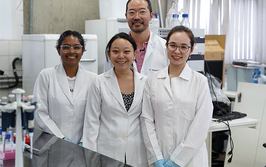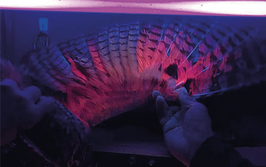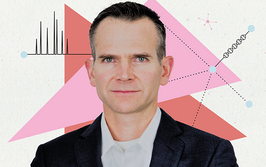Judgment Data?
Two up-and-coming technologies supporting the forensics field
Jonathan Adelman, Michael Marciano |
Setting the PACE
The two of us met at a whiteboard. We began talking about our two fields - forensic DNA interpretation and machine learning - and soon realized that this was a very promising match. The challenge of DNA mixture interpretation – specifically the number of contributors in a DNA mixture – is one that has existed since the field started; however, no one we are aware of has considered the use of machine learning to address that challenge − even though machine learning is ideally suited to handle classification problems with complex data sets. We further developed these ideas, found them to be unique and patentable, and submitted them to Syracuse University. The result is PACE, the Probabilistic Assessment for Contributor Estimation.
While there are several high quality probabilistic genotyping software suites available for DNA profiling, these tools often require knowledge of the number of contributors in order to strengthen their analyses. PACE provides that knowledge at very high speeds and low computational expenditures, as well as higher accuracy than previously used methods. With PACE, we can predict the number of contributors correctly in mixtures of up to four individuals with 99 percent accuracy. We suspect accurate prediction can be made for five or six individuals, and we’re in the process of developing and evaluating this.
We believe part of the significance of our work has been the introduction of machine learning applications in forensic science. Prior to our work there have been a limited number of advanced computational methods applied to the field. Only in the past decade has the field embraced Bayesian modeling and associated computationally intense approximation methods such as MCMC (Markov chain Monte Carlo). Machine learning has the ability of machine learning algorithms to tackle computationally complex problems with large data sets − offering a significant benefit to the field.
Our next steps are to enhance the functionality through the addition of new amplification kits and incorporate other software platforms into the workflow of PACE. We have partnered with Niche Vision Forensics LLC – an Ohio-based forensic software company – to further develop the software.
Amping up Image Analysis
It’s not only biological and chemical forensic analyses that are evolving. The realization that video processing solutions for forensic applications were poor or non-existent led Martino Jerian to found Amped Software in 2008. He tells us why experts need better software for working with images and videos during forensic investigations.
What are the limitations of image/video forensic analysis?
The need for an expert is not always recognized in forensic video analysis. I have lost count of how many times people have mistakenly interpreted a compression artifact as the number of a license plate or a random shadow as a person’s silhouette.
The techniques that we use to enhance and analyze images can only give results if the information is there. Sometimes it is there but hidden by defects – in which case we can attenuate the defects and amplify the information, and this can give impressive results. However, many times the information is not there at all. And in this case, we cannot – and we must not – add new information to the data.
Recently, there has been some buzz about Google software that can enhance images of just a few pixels to get a passable image of a face. In practice, this algorithm is not enhancing images but creating them. It’s an interesting experiment but it does not have a place in forensic investigations.
What exactly can Amped Software do?
You can do complete investigations on images and videos to enhance and analyze them (inspect the reliability of a detail in a video based on the compression, or measure how tall a person is from an image). You can also inspect an image and its format to understand if it has been tampered with using software such as Photoshop or if it’s an original coming from a specific device.
How has the software been applied in the real world?
The primary application of Amped Authenticate is within legal and law enforcement settings to determine whether an image can be treated as a reliable piece of evidence. Images are almost always a part of any investigation and our software is now used by forensic labs in about 80 countries worldwide.
We are finding that images are being manipulated and distorted to meet a certain point of view in research and in universities, in the press and in politics. In truth, we’re finding it everywhere. People generally believe what they see, but we have to start questioning images more. Our motto will always be “Justice through science”.
Research assistant professor, Forensics and National Security Sciences Institute, Syracuse University, New York, USA.
Research assistant professor, Forensics and National Security Sciences Institute, Syracuse University, New York, USA.

















